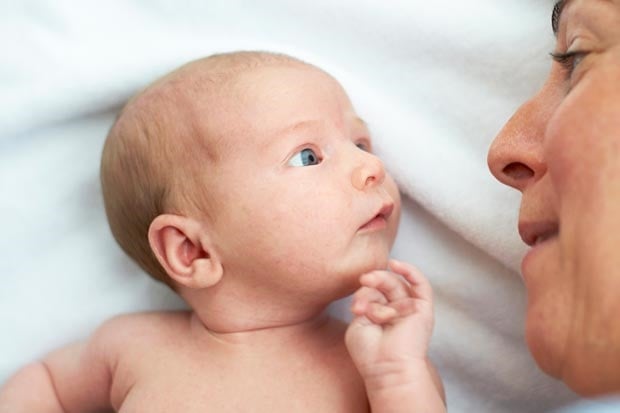
Between birth and three months, babies speak a very basic language, according to Australian mom Priscilla Dunstan.
Dunstan appeared on The Oprah Show a number of years ago, demonstrating her theory.
She made the discovery in June 1998, after she had become a mom; she struggled to determine what her son needed and wanted, but then she started to listen to him.
Dunstan is said to have a phonographic memory, which is like having an eidetic memory, but for sound.
The segment on the Oprah show is just over 17 minutes long, but it's an interesting watch. She explains the message behind the different baby sounds, especially the reflexes which each sound is coupled with. She also includes clips of babies making the various sounds which she filmed while conducting her research.
Newborn baby language basics:
The 5 sounds the newborn language consists of are:
- "Neh" – "I'm hungry"
- "Owh" – "I'm tired"
- "Heh" – "I'm not comfortable" (baby could be hot or cold, in need of a nappy change or generally positioned uncomfortably)
- "Eair" – Lower gas
- "Eh" – Burp
Often a baby's cries all sound the same, and Dunstan acknowledges it may be difficult to identify the differences between the sounds, but she says you need to listen and practise listening.
The Oprah show
Dunstan performed an experiment for the show with 8 mothers and their newborn babies. Moms who participated in the experiment shared the hardships they experienced with their newborns. One mom said it broke her heart knowing her baby was upset but not knowing why.
Another mom spoke about how she thought her son hated the car seat, but after learning to understand he was uncomfortable, she discovered the car seat straps were too tight.
Watch the full interview here:
Just another desperate, struggling mom
When she became a mom, she struggled to figure out what her son needed and wanted, until she started using her gift and listened to him.
Dunstan picked up the noises her son made before he broke out into a frantic cry. She picked up on the consistencies in the sounds he made.
Initially, she thought this was only her son's way of communicating with her, until she tried it with other infants. She discovered a universal language newborn babies use.
Doing the research
She began conducting her own research. She moved on to testing her theory on an international scale. She did this for 8 years, then decided to seek guidance and assistance from researchers at Brown University.
The difference between their and her research was that Dunstan was studying babies' pre-cry and the university lecturers were studying babies' full-blown cries.
Naturally, there are sceptics who don't believe there is legitimacy in Dunston's theory and regard "a cry as a cry", like educator and scientist Jeff Toney. The Dunstan Baby Language website states that to their knowledge there are no other medical or academic papers published invalidating the research.
The website also shows the research findings of an independent study conducted in Australia, America and the United Kingdom. The combined sample size of 400 mothers and infants show:
- 90% of all mothers reported DBL is valuable and would recommend it to other mothers.
- 100% of all first-time mothers reported it was valuable and would recommend it to other mothers.
- There were significant increases in maternal self-esteem and reductions in parental stress.
- Almost 70% of test moms reported their infant settled faster after using DBL.
- Almost 70% felt more confident as a mother and more relaxed, in control.
- Over 50% reported more unbroken sleep for themselves and their baby.
- DBL not only helps mothers, but also benefited 2 out of 3 fathers, resulting in reduced levels of stress, greater paternal involvement in the baby's care, and more positive marital relationships.
A success story:
Cape Town father of twin boys, Max, said he came across the language after watching the episode of Oprah in which Dunstan featured:
"It was a tremendous help. I had not one, but two newborns to take care of and there were many occasions when I had to do this on my own. I think the theory is 100% accurate.
"While walking through a shopping mall, I would offer to help other moms who were struggling with their babies. Some of them weren't very receptive to the help, seeing that a stranger kind of knew what their babies needed and, coupled with this, I'm a man.
"There were times my father took care of the twins and I taught the language to him as well. He knew the five sounds to look out for and was amazed at how effective it was."
Have you ever heard of Dunstan Baby Language and have you used it? Let us know about your experience and opinion by emailing chatback@parent24.com, we may publish your responses.
Also read: What your baby's trying to tell you
Also read: Read your baby like a book
Also read: The first month




 Publications
Publications
 Partners
Partners














